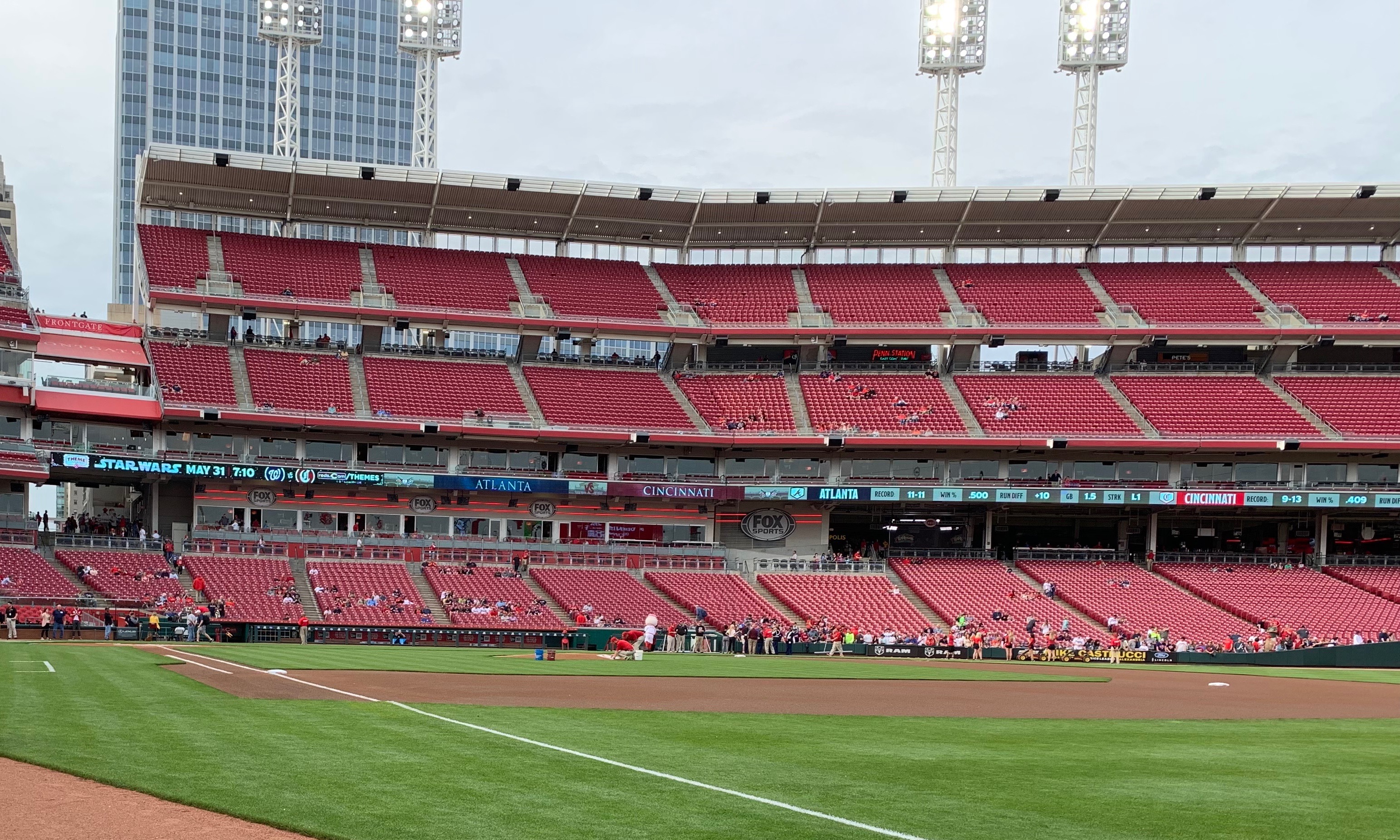
Defensive shifts have been a hot topic in the league for the past few years. With more data available to teams regarding where certain batters are likely to hit the ball, it makes sense to play to the probabilities. The shift does not work every time. But any incremental advantage over the season is valuable. There appears to be a sense that it works, given the way the league’s use has jumped the past two years.
- 2016 – 13.8%
- 2017 – 12.1%
- 2018 – 17.4%
- 2019 – 24.6%
Traditionally, defensive shifts occur in the infield, when teams move three infielders to the right side of second base for a left-handed hitter who pulls the ball a lot. Former Red Jay Bruce has seen infield shifts in 87% of his at-bats so far this year because of his propensity to pull ground balls.
But this post takes a look at a new type of shift: a Four-Man Outfield. Mike Petriello of MLB.com has a great article from spring training that analyzes this idea. The Reds are one of the teams that Mike mentions. They employed the Four-Man Outfield strategy in March against Kris Bryant and Jose Ramirez, two guys who hit a lot of balls to the outfield.
Despite early publicity, four men playing across the outfield is still something you don’t expect to see unless you’re headed to a slow-pitch softball game. To get a sense for how rare it is, 2017 shows only 6 pitches where teams used it. In 2018 that number grew to 252, but that did not register as even a tenth of a percent. The number of Four-Man Outfield shifts in 2019 (296) has already surpassed last year but still sits at just 0.2% of all pitches thrown.
Teams use this strategy for a couple reasons. It makes it more likely the outfield will catch a fly ball. But it also cuts down on the number of doubles by narrowing the gaps. Digging into the results, one can see why this idea might be gaining more traction. Two stats that help us better understand this are Expected Weighted On-Base Average (xwOBA) and Expected Slugging Percentage (xSLG).
When the defense uses standard positioning and the actual results of batted balls, as shown by wOBA and SLG, are worse than the expected results (xwOBA & xSLG), we attribute that to bad luck. Perhaps the ball went directly to a defender, or maybe someone made a great play. But if actual batted ball result underperforms expectations when the defense is in the shift, it’s evidence that maybe the defender is in the right spot.
Remember, shifts are based on the experience of hundreds and thousands of balls a player has hit. Teams know the optimal place to position their defenders. Adding another player in the outfield means defenses can cover previously open areas and get to balls faster. This should cut down on hits and total bases.
In 2018, the league’s wOBA (0.266) – xwOBA (0.299) on pitches with a fourth outfielder was -0.033. That means the contact was good enough for an expected wOBA of 0.299, but the results only delivered 0.266. So far in 2019, those numbers are elevated (0.295 wOBA vs 0.331 xwOBA), but the gap is similar, indicating the Four-Man Outfield may be contributing to better run prevention.
David Bell’s Reds, believe it or not, are on the forefront of the Four-Man Outfield, using it for 171 pitches, or 3.5% of the time, so far in 2019. With only 24 balls in play, the sample size is still small, but the early results have been encouraging. While their opponents’ wOBA slightly exceeds the xwOBA, there is a negative gap between SLG and xSLG (0.361 vs 0.394), indicating opponents are taking fewer bases than would be expected while the Reds defend with four outfielders.
To get a sense of how this happens, here is a hit by Yasmani Grandal during the first week of the season.

Notice how quickly Puig is able to get to the ball and hold Grandal to a single despite the ball getting all the way to the corner. Sure, part of this is due to Grandal being a very slow runner and Puig having a very strong arm. But Grandal’s hit was right in the corner. It had an xSLG of 1.232 (interpreted at 1.2 bases). So while it was not a guaranteed double, it could very well been one given different circumstances.
Another example is a ball Corey Seager hit that could have gone to the gap had the Reds been in a traditional formation. This ball had an xSLG of 1.125.

Again, Seager might not take second anyway depending on where the outfield would be playing with three defenders. But there was zero chance of a double here with Winker getting to the ball very quickly.
Looking across baseball, the league has seen similar results. Last year’s SLG vs xSLG (0.339 vs 0.398) variance with four outfielders was substantial, though it was only 39 balls in play. With 42 balls in play this year and an even larger gap (0.279 SLG vs 0.398 xSLG), we should start to see more data to make more definitive conclusions.
One explanation for why the Reds are focusing on outfield positioning so much — and why it’s paying off — could be the lack of strong defensive outfielders. Losing Billy Hamilton over the winter left the roster with no true center fielder for the first month. As the the outfield personnel evolves, perhaps there will be less need to shift. Adding Nick Senzel and subtracting Matt Kemp from the equation makes the defense significantly better.
But after years of the Reds living in the dark in regards to advanced analytics, it is refreshing to see them experimenting with new ideas and strategies.


